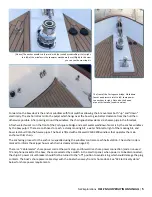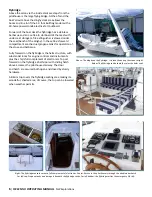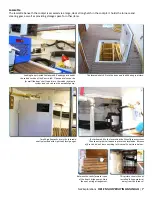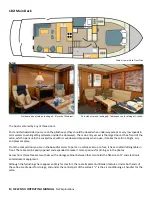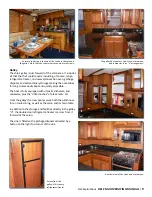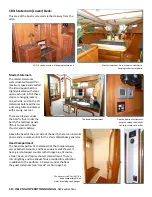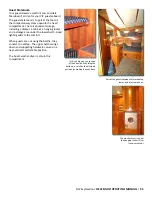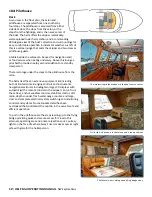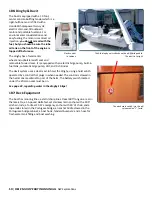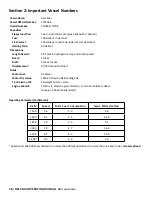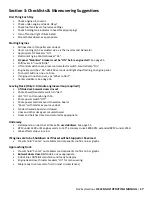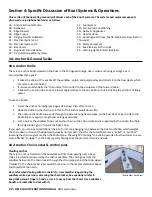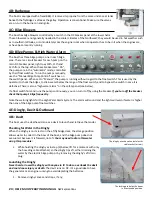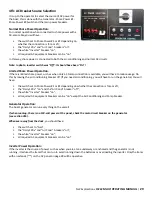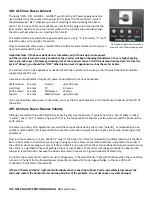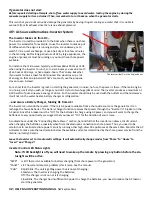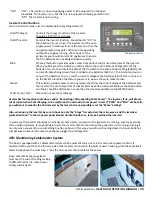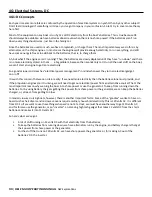
NW Explorations
HELE MAI OPERATING MANUAL
|
19
3B: Maneuvering Suggestions
3B1: Docking & Undocking
Usually it’s easier to dock bow in. Have your mate at the swim step, ready to step
off and secure the stern line, against which you can pull to swing the bow in toward
the dock. By having your mate ready to disembark when close to the dock, he/she
will not have to jump to the dock, risking a turned ankle or falling overboard. It is the
skipper’s job to put the boat next to the dock so the mate needn’t jump, but merely
step off!
Because the aft bulwark doors open out, there is a risk that they will be damaged:
A. when the boat is approaching or leaving a dock;
B. when the boat is at a dock and is rolled by a wake; and
C. when the boat is rafted with another boat.
As a result, you should have the aft bulwark doors closed whenever approaching
or leaving a dock, if there is any chance a wake will roll the boat when at a dock,
or when rafted with another boat.
The forward
bulwark doors by the pilothouse are not affected by this caution.
Approaching a dock, have fenders out as required and have the bow line already
rigged, passed through its hawse pipe, and draped back on the side of the boat
between the stanchions so it can be reached from the dock. Never put a line from
a cleat over a rail: the boat’s weight will damage
the stanchion or break the rail if it pulls against the
line! When the mate’s ashore, the line can be easily
reached!
If dock clearance permits, spring the boat forward
so that it pulls forward on the stern line. This will
bring the stern close to the dock. Let the bow line out
enough so that the boat can rest against the stern and
midships fenders.
3B2: Maneuvering in a Harbor
Because of its substantial weight, this boat is predictable! Take advantage of its momentum/inertia: you will find that if
you maneuver slowly and thoughtfully you can maintain control at all times.
Before undertaking docking in a “tight” space, practice with the boat in open but protected water to get the “feel” of the
boat. Don’t let the skipper’s ego get in the way of safe operation, and remember, if the slip is too tight you can always
dock somewhere else! And don’t forget the boat’s overall length is approximately 50 feet! Operating from the flybridge is
usually best until you are very familiar with the boat because of its much better visibility.
You should usually dock “bow in”; remember, the stern is what is turned by the rudder, so you should “point the bow
where you want it” when entering a slip, then swing the stern as necessary. Remember, too, that the rudders are
normally effective only when the props are going forward. Usually, it is best to center the rudder and use the engines to
steer the vessel.
Finally, use the bow thruster sparingly and only as necessary (remember, thousands of fishermen run boats bigger than
this one without thrusters and only one engine!) As you will read later in this manual, if used too much, more than a
couple of minutes in a single docking session, a thruster can get hot enough to open its thermal overload relay and will
then be inoperative for 10-15 minutes while cooling.
Port aft bulwark door by salon. The
aft doors opening out requires caution!
Forward doors open in, so no problem!
(These near the pilothouse each side)

